Inside A Kentucky Amish “Shop Home” (17 Photos)

Unlike the Swartzentruber home last week, this week’s home was clearly built by the occupant, or someone from their community. The style is a plain and simple one. A one-story design with an attic, which looks intended to one day serve as a shop (some Amish build shop homes – a simple structure which they reside in for some time, before building their more permanent home, after which the structure becomes a shop). A home like this would be something for a young family just starting out.
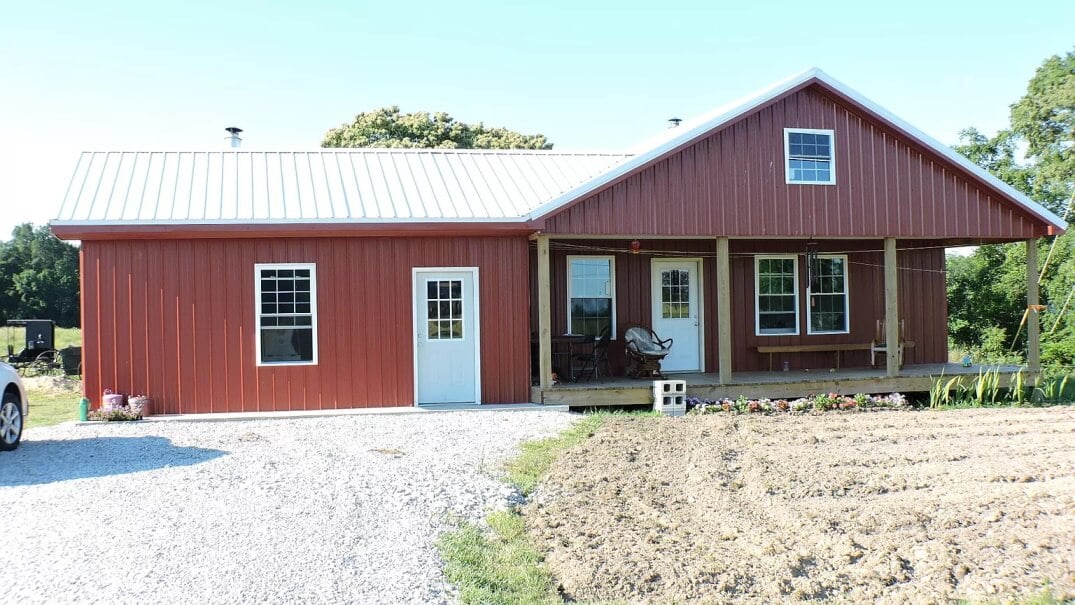
Aerial view photos give you a sense of the scope of the property.

The property spans 24 acres. The community is Owingsville, Kentucky (Bath County), about 45 minutes outside Lexington. I am not 100% sure but I believe this may be a Troyer Amish settlement. The Troyer Amish are a quite plain group whose best-known settlement is the Conewango Valley community in New York. Shop homes are fairly common in that community.

It appears this home was built on a property where a previous home once stood. A chimney remains:

Here’s the pitch/property description from the Zillow listing:
LIKE NEW Home on 24+/- tillable Acres with 30 x 72 Hoop Barn and Storm Shelter! This Home has Living Room, Kitchen with dining area, 2 Large Bedrooms and mud room. It is Amish built, has CITY WATER in home, but no electric or indoor bathroom. A Plumber, An electrician can turn this into fully finished home for your family with 24+ great Bath Co acres.
A look inside the home starting with the wash room/multipurpose space.

The circular thing on the wall is a hanger for small clothing items. How old do you think that washer might be?

Next we have the kitchen. Note the ceiling material appears to be the same type of metal as that used for the exterior walls and roof. “Rudy” is a not-uncommon male name among Amish.
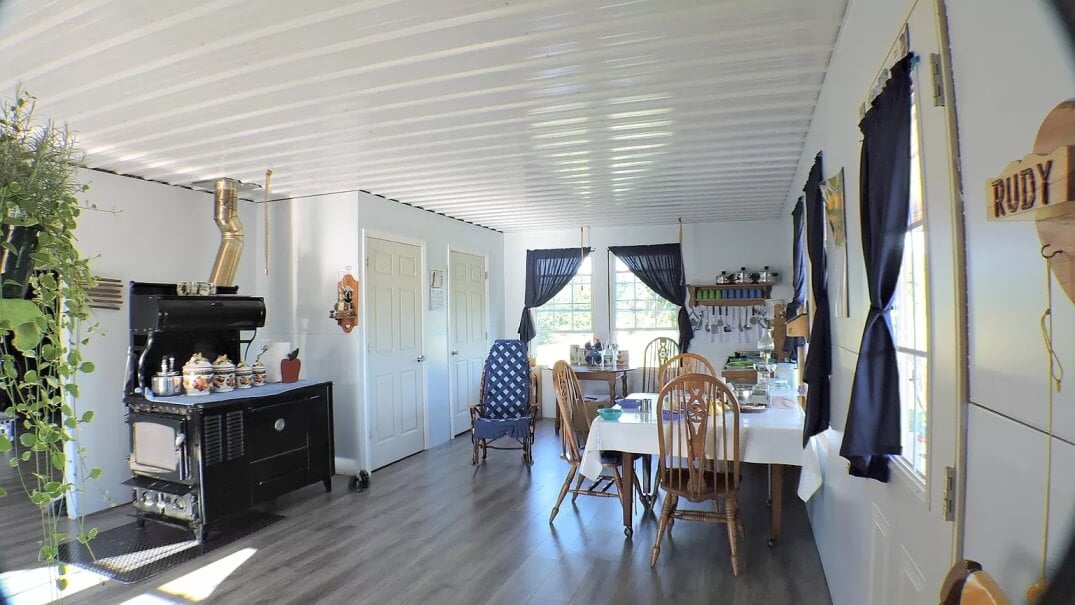
One thing I enjoy with this series is seeing familiar items repeat themselves in different homes across communities. And certain things are more indicative of a plainer home. Flypaper strips are one of those. Flies don’t stand a chance in this place.

Living area.
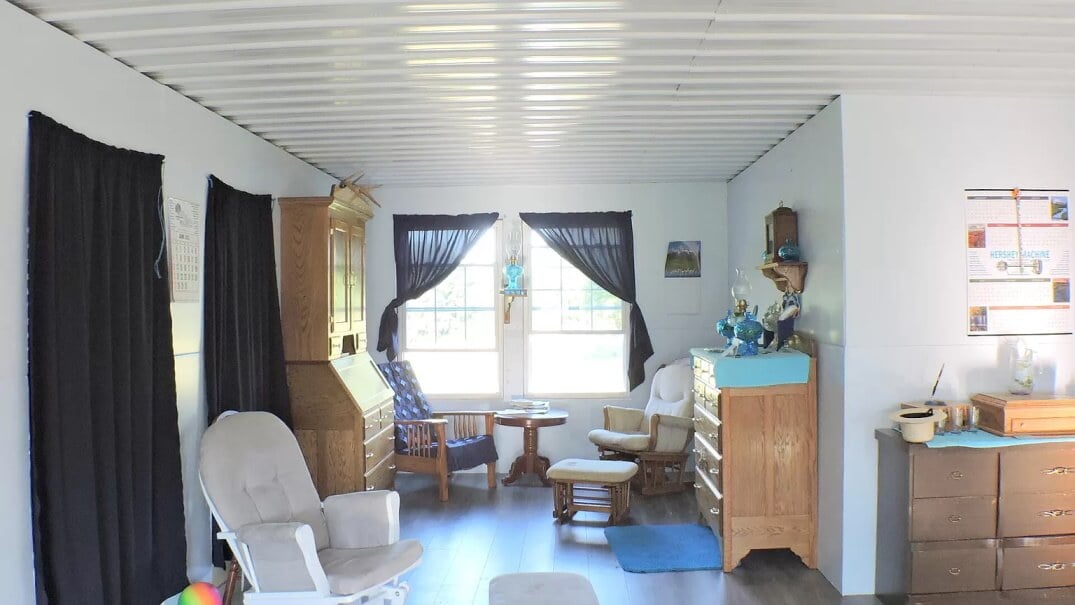
Bedrooms. These following photos are unfortunately not especially well-framed and one is out of focus. But still you can see the austere look and simple furnishings.



Back outside we catch a closer glimpse of the family’s transport.

Garden. What sort of things does this family grow? I’m not sure what the black arches are intended for (my thumb is only a very light shade of green).
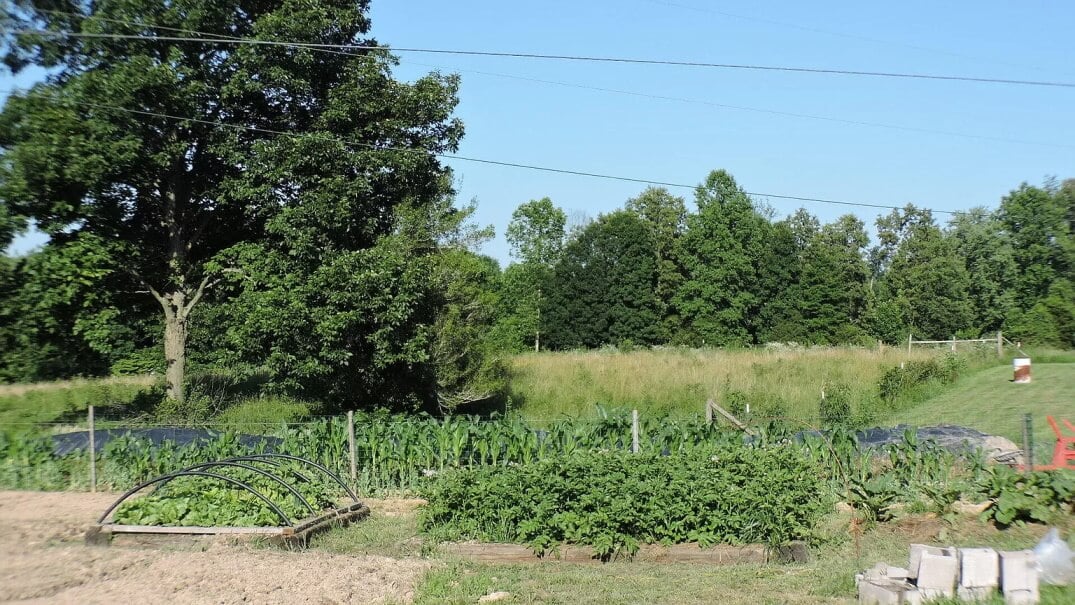
This is what is known as a “hoop barn”, which is an inexpensive alternative to more permanent structures. Steel arches are covered with a tarp material, making a structure which is relatively easy to set up and to move. I don’t find these to be especially common among Amish but have seen them from time to time, and may make sense if you don’t expect to be in one place for a long time.

Overall this property has the feel of a place built quickly and inexpensively by a young family who may not have been sure if they would be living in this community for a long time. A shop home and a simple barn like this lets the family get started without a huge investment, and allows them greater flexibility to move on if need be.
And moving on is what they appear to be doing now. This property is currently on the market (agent: Brenda G Murphy of Murphy Realty Group). The home is 1,320 square feet, on the aforementioned 24+/- acres of land. The price?

$195,000. It would definitely take some work to raise this place to average “English” standards, but for someone who wouldn’t mind living a bit plainer life on a good chunk of land, it seems like a nice property.






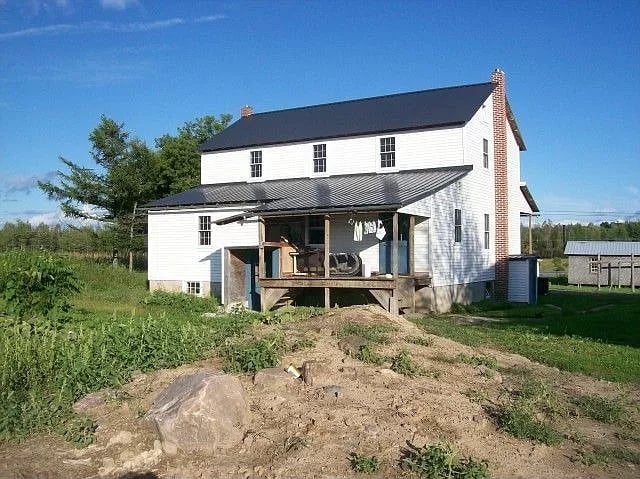

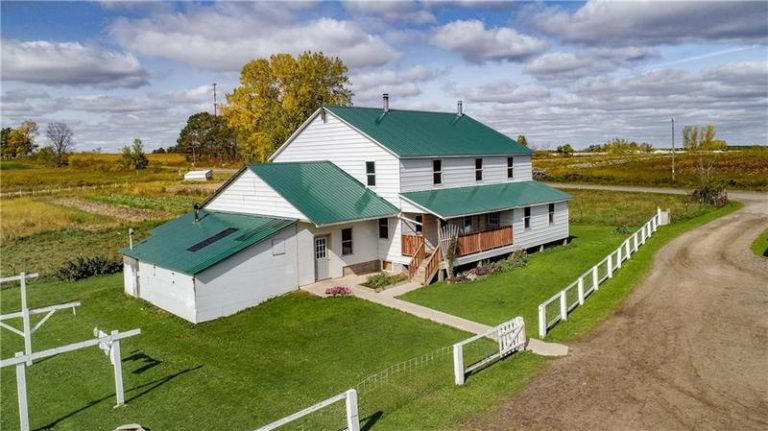

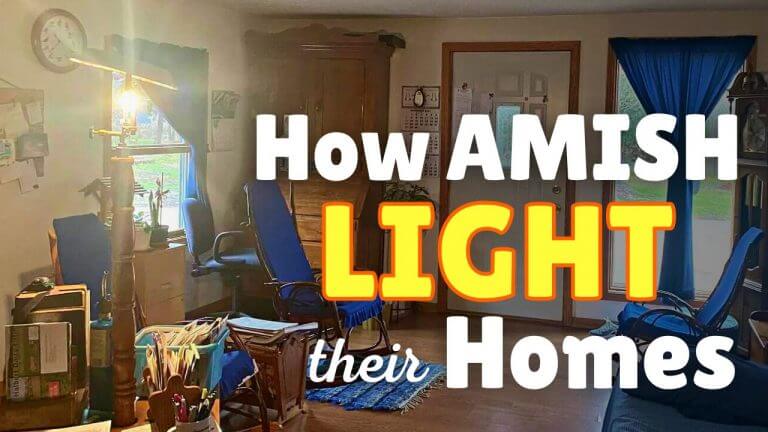
Chimney
It looks 19th century to me.
Trips
I have taken this family on several trips to Pa and Wi over several years.
Garden
The black arches in the garden are to support either a clear plastic covering for extra warmth and frost protection while the plants are getting started from seed and/or net fabric covering for less sun or to keep bugs out later in the season.
Lots to like.
I’d try to turn the ‘Hoop Barn’ into a greenhouse.
Build a permanent barn.
The home is far enough away from what appears to be the main road. Still, hopefully traffic is low. The quieter the better.
Ahh, to dream.
Troyer Amish
About a decade ago, I met folks from Owingsville. They were Swiss Amish with Berne County (IN) background. As I recall, there were about five families there, most of them being somewhat related.
In this article, this family appears not to be Swiss Amish, based on the top buggy. And Swiss Amish nearly always have gray or white barns versus the red barns of the Troyers and others. So I tend to agree with the assessment of them as being Troyer.
But what confuses me is the places of origin being Indiana and Michigan (based on Donnermeyer and Andersons article in the Journal of Amish and Plain Anabaptist Studies in the fall 2014 titled “The Growth of Amish & Plain Anabaptist Communities in Kentucky”) because I cannot think of any Troyer communities in Indiana.
This family came from Fryburg, Pa. They are moving to Viroqua, Wi. They are not Swiss. The local name for the community they live is Peasticks, and the Swiss community is Preston, Both are communities near Owingsville.
Great information
That was great information. Thanks.
This homestead looks very nice. I hope the remaining community stays strong.
Wasn’t this the community where multiple children died in a flooded stream after the horse slipped and fell while crossing a partly submerged bridge?
I wonder what is the status of the Swiss folks. Is that settlement growing?
Info
The bridge is about a mile or so from this farm. The Swiss community has and is still growing quite a bit. Two other nearby Swiss communities are near Carlisle and Flemingsburg.